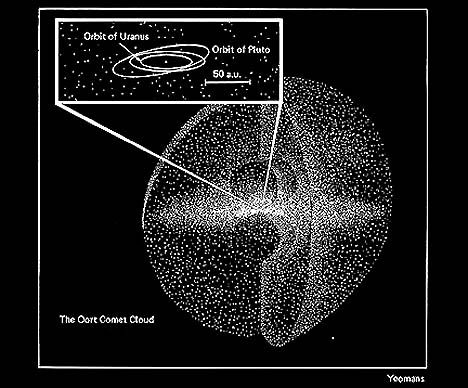"One would expect comets when they come in around the sun to be roughly uniform in their positions in space. So, if you plotted the closest point of the comet to the sun on a globe or sphere, the comets should be uniformly distributed. In fact, comets are not uniformly distributed."
- Daniel Whitmire, Ph.D., Professor of Physics,
University of Louisiana, Lafayette -
October 25, 1999 Lafayette, Louisiana Physicists in the United States and England have been studying the orbits of comets and are theorizing that something is pulling on the icy clumps that revolve at the dark and outermost edges of our solar system. The "perturber" might be a brown dwarf three times more massive than the sun and orbiting about three trillion miles from earth in the primeval Oort Cloud of ice, rocks and dust that literally surrounds the family of sun, planets, moons, asteroids and comets in our solar system.

Click here to subscribe and get instant access to read this report.
Click here to check your existing subscription status.
Existing members, login below:
© 1998 - 2024 by Linda Moulton Howe.
All Rights Reserved.

